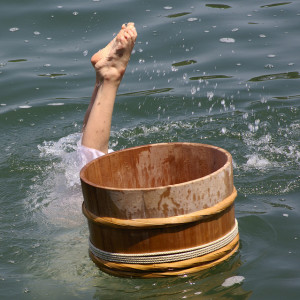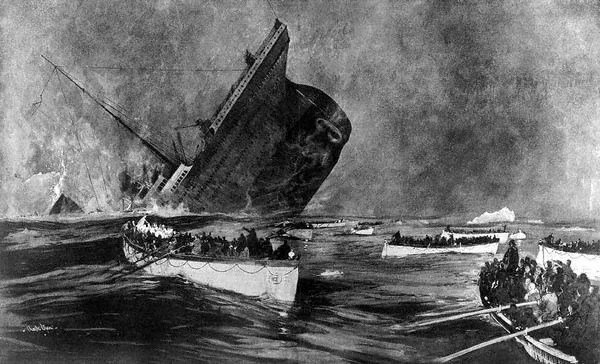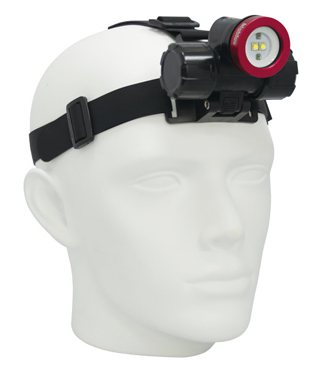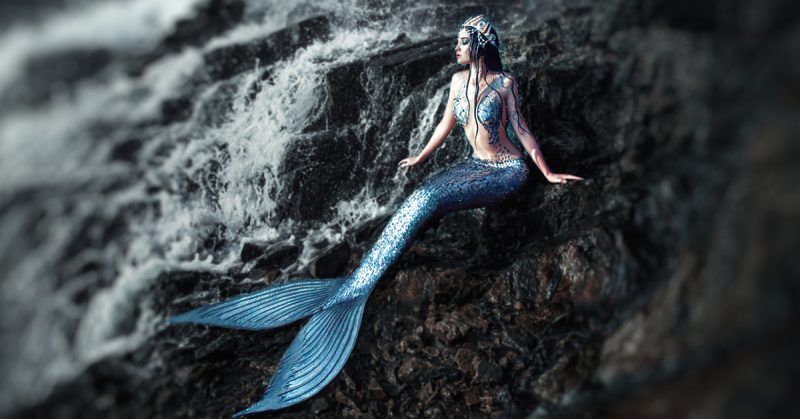Originally Published @ Scuba Scoop 3 June 2011
In a few fishing villages along the coast of Japan, there are an amazing group of women known as ama. Ama, meaning ‘sea woman’, are free divers, women who make their living by diving to depths of up to 25 metres without using oxygen tanks or other breathing apparatus. Instead, the Ama rely on their own skill and breathing techniques to propel them to the bottom of the ocean and back to the surface again while holding their breath for up to two minutes at a time. Even more remarkable, in recent years as the population has aged and young people leave the villages for the city, the majority of ama are now aged in their 50s and 60s, with some divers continuing to dive well into their 70s. While there are also male divers (also known as ama, but using a different kanji character to distinguish between male and female) in some areas in Japan, it is the women divers who have attracted the most interest and captured the imaginations of Japanese and Westerners alike.
The history of the ama dates back at least 2000 years. There are references to the ama in famous texts such as the 8th century Man’yoshu collection of Japanese poetry and Sei Shonagon’s Pillow Book from the 10th century. The ama have also been immortalised in ukiyo-e woodblock prints from the Edo period and even infiltrated Western popular culture by achieving the somewhat dubious honour of appearing as a Bond girl in the James Bond film You Only Live Twice (1967).
There are various theories for the dominance of women as free divers, some suggest that in ancient times there were equal numbers of male and female divers but when the men began to travel further out to sea in boats to pursue fishing the women stayed close to shore, diving for seaweed and shellfish at the bottom of the ocean and this tradition was passed down to the daughters and granddaughters. The widely-held belief among ama divers themselves is that women are able to withstand the cold water better because of extra layers of fat on their body and are therefore able to stay in the water for longer periods and collect a bigger catch.
Traditional ama divers used a minimum amount of equipment, they usually wore only a fundoshi (loincloth) while diving to make it easier to move in the water and a tenugui (bandanna) around their head to cover their hair. The tenugui might also have good luck charms written on it to protect the diver from evil spirits. Ancient ama divers also used a wooden tub or barrel as a buoy, this buoy was connected to them by a rope and they would use it to rest and catch their breath between dives. Those divers who descended the deepest would also wear a weighted belt around their waist to aid their descent. The most important tool for divers searching for abalone (the most prized and lucrative catch) was the tegane or kaigane, a sharp spatula-like tool used to pry the stubborn abalone from the rocks.
In the early 1900s goggles were introduced and quickly adopted by the ama. Around this time air hoses and hand pumps were also introduced from abroad and used in shellfish diving in some regions but it quickly became obvious that a diver using such equipment could stay submerged for longer and would soon destroy the resource base. In an effort to protect the abalone and prevent overfishing air apparatus were banned by the fisheries cooperatives that all commercial ama divers must belong to and the ban remains to this day.
However, other new equipment has been introduced over the years. Until the 1960s, many ama, especially those in villages along the Pacific Ocean coast of Japan, continued to dive wearing only fundoshi, or cotton shorts, a remarkable sight captured by Japanese photographer Iwase Yoshiyuki in his series of photographs taken on the Chiba peninsula in the first half of the twentieth century. With the introduction of the wetsuit to Japan in the 1970s, the sight of a half-naked ama diver became rare and wetsuits are now an accepted form of equipment for diving.
The advent of wetsuits did alter the working conditions of ama to some extent. In the past there were no restrictions set by the cooperative on how many hours a diver could work, when dressed only in fundoshi or a thin white cotton outfit called isogi, ama divers were prevented from working long hours and therefore overfishing by the coldness of the water. However, when wetsuits were introduced and extended the amount of time that a diver could stay in the water, the fisheries cooperative imposed rules to protect the resources, in particular abalone, and prevent overfishing. The cooperatives decided to shorten the diving season and the number of hours per day that a diver could stay in the water, typically 1 hour in the morning and 1 hour in the afternoon in spring and two hours twice a day in summer. In the past ama may have spent up to six hours in the water per day, therefore with the introduction of wetsuits the pressure to find as many abalone as possible in a shorter time has increased.
Although ama diving practices and techniques vary from region to region, there are 2 general types of ama. Oyogido or kachido divers don’t use a boat, instead they swim out to the diving areas close to shore and dive to quite shallow depths of 2 to 4 metres. These divers are usually novices who perfect their breathing and diving technique in the relatively safer environment closer to shore. Older ama who are no longer able to dive to deeper depths may also engage in this type of diving.
Funado are the most experienced divers who have worked their way up the ranks and are able to make the best income. Funado work with a single boatman (often their husband) and dive from a boat further from the shore, descending to depths of up to 25 metres. In order to descend to such depths quickly funado hold a 10-15kg weight attached to a rope on their way down to the sea bed. When the funado is almost out of breath and ready to ascend she tugs on the rope attached to her waist and the boatman pulls her to the surface using a pulley system on the boat.
During the diving season, life for the ama revolves around the ama hut, or amagoya. This is the place where the divers gather in the mornings to prepare for the day, eating, chatting and checking their equipment. After diving they return to the hut to shower, rest and warm their bodies to recover from their day’s work. The atmosphere in the hut is one of relaxation and camaraderie, for six months of the year the women are free from the usual familial and social duties they are expected to perform, and they are able to connect with other women who share their love of the ocean and diving. In the past, when career opportunities for women in a small village were limited and married women were expected to stay at home under the watchful eye of their mother in law, life as an ama must have been an attractive prospect despite the tough conditions and potential dangers.
The amagoya was also a place of learning for novice divers. Unlike other traditional crafts, there is no formal apprentice-style system of training for ama divers. While diving skills such as breathing techniques can be acquired relatively easily through practice, the most valuable knowledge, that of the best places to find abalone are a closely guarded secret, even between mother and daughter divers. However, in the amagoya, by listening to the more experienced divers’ recap of their day, novice divers could begin to gather valuable knowledge about the local reef environment and therefore where the most abalone are likely to be found.
While ama gather various foods such as seaweed, shellfish and sea urchin, it is the abalone which is most prized and lucrative. In the heyday of abalone diving in the 1960s, a skilful ama could earn as much as 80,000 US dollars in a six month diving season. As a result, talented ama were viewed as highly eligible and could take their pick of the local men when choosing a husband.
Unfortunately, with the decline of abalone stocks the earning power of the ama has also been reduced. Despite the efforts of the fisheries cooperatives to preserve precious resources through restricted diving hours, bag limits and size regulations, outside factors such as pollution and global warming have harmed the environment and affected the growth of abalone. While in the past it may have been possible to make a good living from abalone diving alone, most ama now dive to supplement their main income of farming or other work.
In a trend that mirrors the general population in Japan, the ama population is ageing rapidly. Many of the divers active today are in their 50s and 60s, with very few ama aged in their 20s and 30s. The work of the ama seems to be a unique opportunity for Japanese women to engage in competitive, exciting, potentially lucrative work that provides a great amount of freedom and independence but at the same time allows women to be part of a tight-knit group of fellow enthusiasts that life as a housewife would not have afforded. In previous generations this was very rare and would explain why the job was attractive despite the harsh conditions and potential danger. In this day and age when career opportunities for women have expanded greatly and factors such as environmental damage and economic problems have reduced the earning power of ama divers, younger women may not be as attracted to the job. It would be a great shame for the tradition of ama diving to disappear due to the pressures of modern life, we can only hope that the call of the ocean will be strong enough to attract a new generation of women who will be proud to be called ama.
thanks to Ama
Kathy Dowsett
www.kirkscubagear.com







Leave A Comment